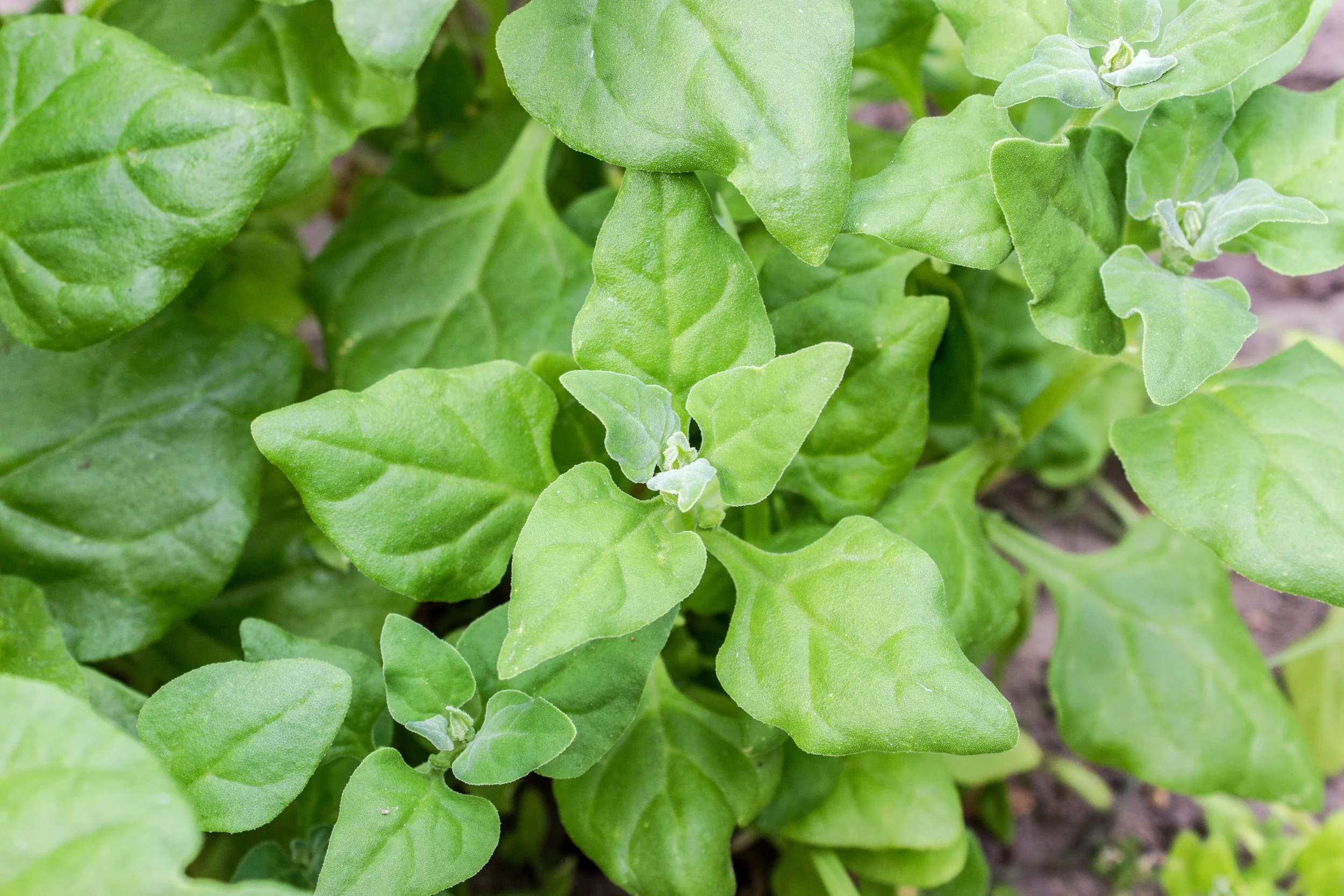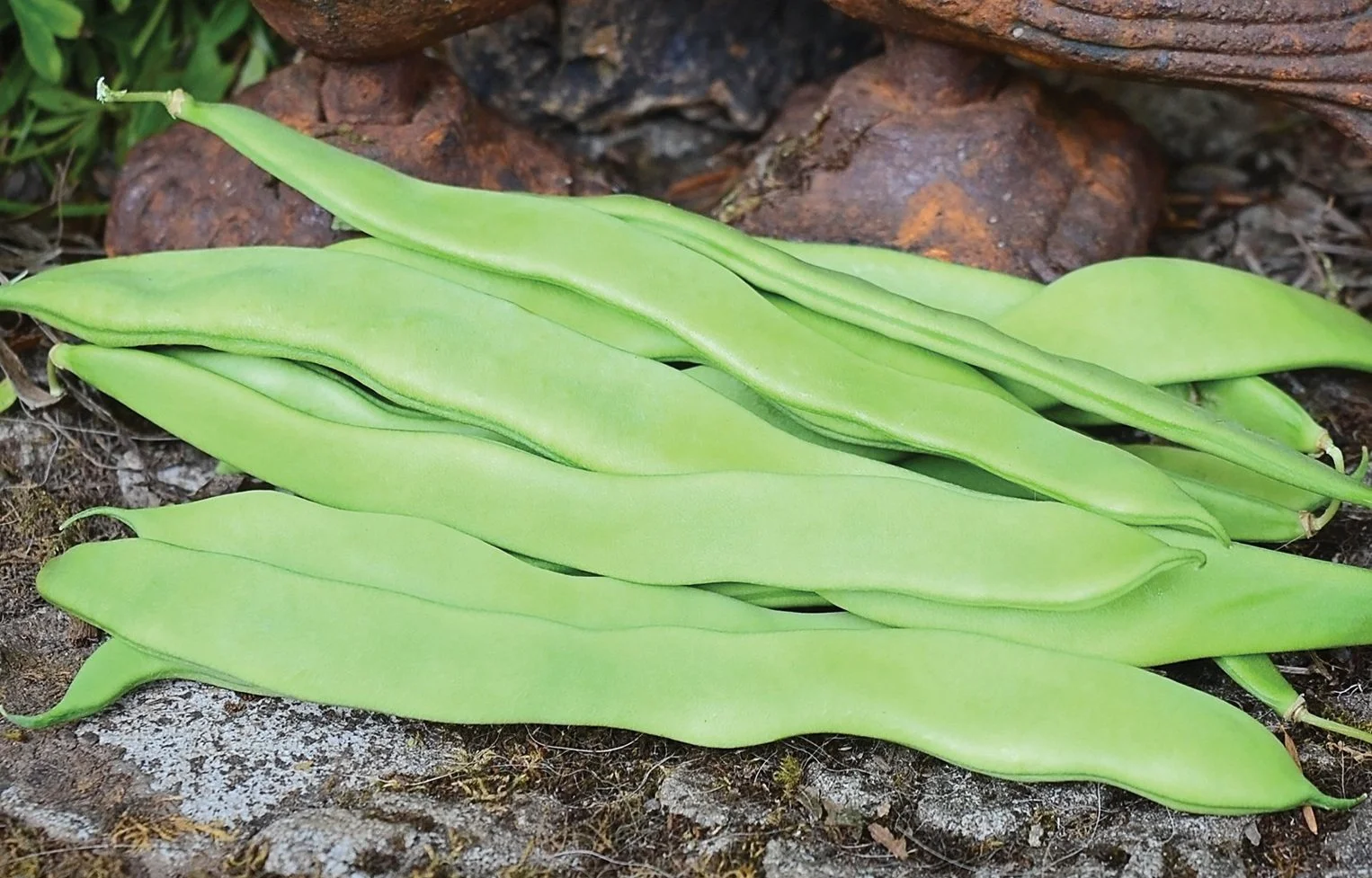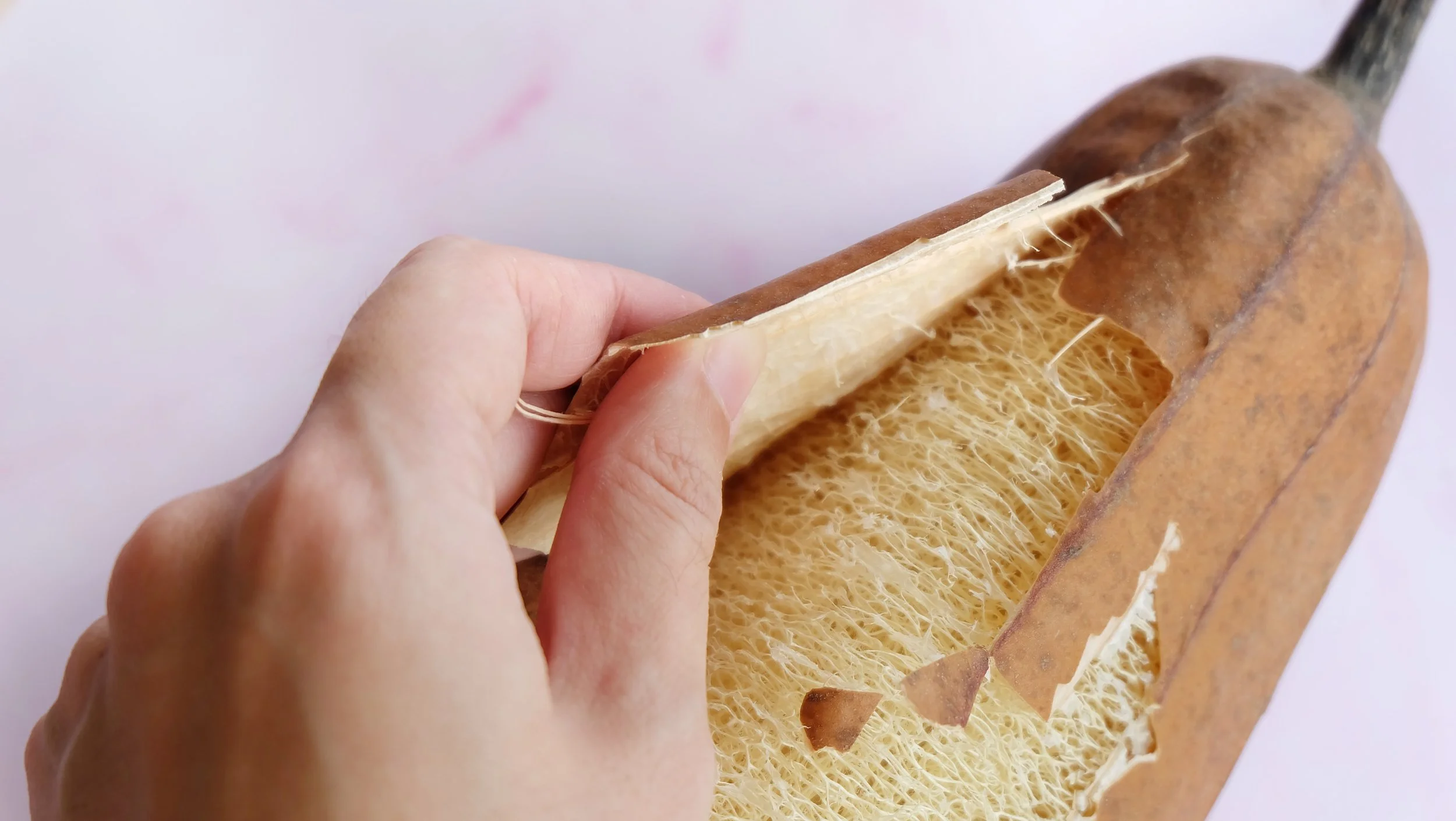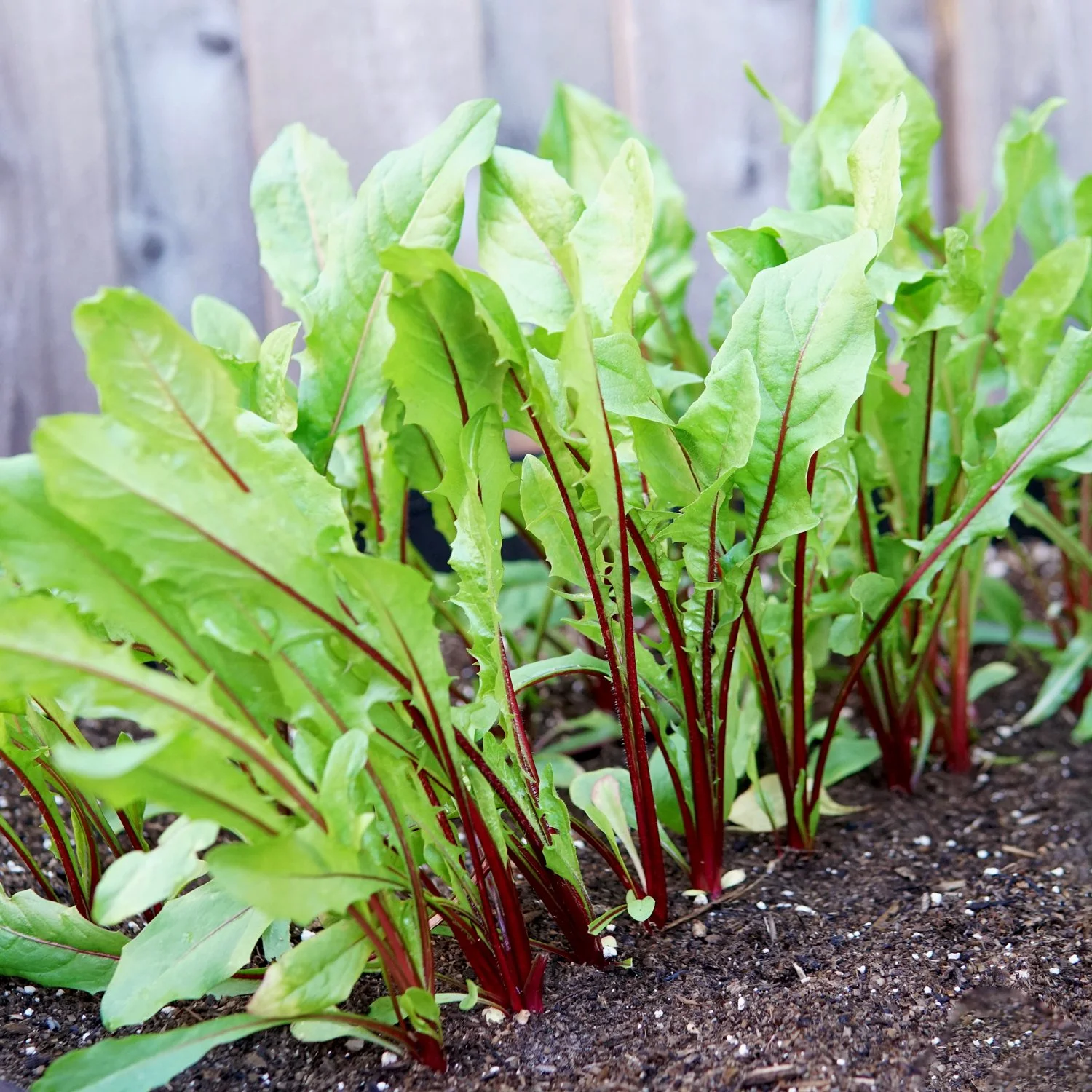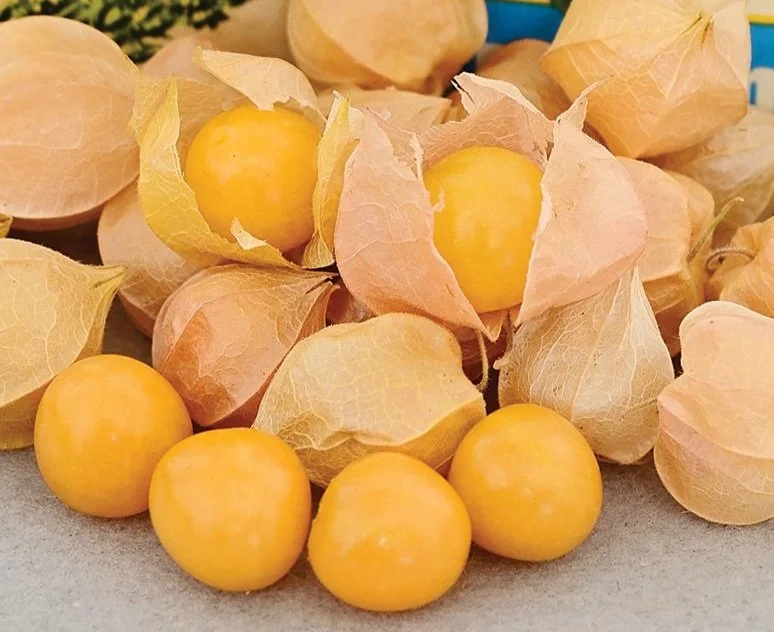10 crops to try in your garden!
While it can seem like a daunting task to expand your garden and try new things, we at Territorial believe experimentation and stepping out of your comfort zone is part of what makes gardening so fun! We work hard to provide a wide range of products, from the traditional and well-known options to exciting, unique, and new varieties! If you’ve been thinking about introducing new options to your garden but don’t know where to begin, check out this list of my top 10 recommendations!
1. Cardoon
Cardoon shares a genus with Artichoke and has a similar flavor. This crop was popular in ancient Greece and Rome and was then commonly used during the medieval and early modern periods throughout Europe. Hardy in zones 7-10, it is treated as an annual in many parts of the US, although some in colder areas have had luck overwintering when provided with adequate protection. Cardoon is a fun and interesting plant to grow, as it is considered an edible ornamental – it adds nice texture and color to the garden while also being useful and delicious. In most climates, it forms a beautiful purple flower that draws in pollinators.
While cardoon leaves can be difficult to cook with due to their hardened texture, the leaves will soften if left until after the first frost of the winter. The tough outer leaves must be removed to access more tender ones. Boiling for several hours in acidified water (using lemon juice or apple cider vinegar) will help soften the cardoons. After blanching, there are countless uses for cardoon. It can be breaded and fried, included in soup with other fall favorites such as pumpkin, and added to pasta dishes. The opportunities are endless!
Cardoon is beneficial as it contains a wide range of vitamins and minerals, including iron, potassium, copper, magnesium, and vitamins B & C, just to name a few.
2. Romano Beans
Romano beans are a great addition to any garden – and kitchen! Also known as Italian flat beans, Romanos boast a unique, juicy texture. They are great eaten raw due to the depth of flavor they offer. They can also be cooked in a variety of ways, including grilled, pickled, blistered, or blanched. Throw them on the grill with some chicken or burgers for a delectable side dish--best served with a lemon juice and olive oil blend. You can also slowly simmer them in broth so they soak up the flavor and become even more tender.
Sautéing Romano beans with peanuts, lime, and ginger is a great summer recipe. Charring the beans and tossing with a lemon dressing and mozzarella provides an excellent side dish for just about any meal. Or keep it simple, and cook them the same way you cook traditional snap beans.
3. Romanesco Cauliflower
Romanesco cauliflower, sometimes called Romanesco broccoli, is an exceptionally unique addition to any vegetable garden. With a slightly nutty flavor, it is great in many of the same dishes as regular cauliflower and broccoli. It can be roasted with garlic, lemon, and butter or made into a broccoli cheddar-like soup. It’s also a great addition to stir-fry and pasta dishes. Or stick to the basics and serve it raw on a vegetable platter. Romanesco cauliflower’s mesmerizing fractal structure is guaranteed to be a conversation starter in any dish!
4. Corn Salad
Corn salad, also called Mâché, is a cold weather crop that’s great in, as the name suggests, salad! Corn salad gets its name as it is traditionally planted after the corn harvest. The greens grow close to the ground and, due to their delicate nature, can be tedious to harvest, but the flavor and interest they add to the plate make it worth it, especially as you await your spring lettuce greens.
Corn salad has a slightly nutty flavor and is an excellent addition to any lettuce salad. It can also be sautéed or steamed and served as a side dish like you would spinach. Add it to rice dishes, soups, and even omelets. Just make sure the corn salad greens are the last addition to the dish as they will wilt if cooked too long.
When grown properly, it offers a wide range of nutrients including calcium, copper, omega-3, and vitamins A, B2, B6, and C, just to name a few!
5. Luffa Gourd
The luffa gourd has become increasingly popular over the years, although many shy away from it as some consider it difficult to grow. However, I would encourage you to give it a go – you don’t know what you’re missing! As its name suggests, luffa gourds can be used to replace store-bought luffa and sponges.
What makes this gourd even more useful is the fact that the immature gourds can be eaten raw or cooked like summer squash. If harvested when small, under 4”, it does not need to be peeled. As it grows, the skin starts to become bitter, so you may want to peel it if it’s larger than 4”. As with many crops in the cucurbit family, the flowers are also edible. Luffa tastes similar to zucchini or cucumber. You can roast, sauté, or even grill it when it’s young, under 6”. Wait for it to mature and start turning brown, then harvest for the sponge-like insides for a fun and natural replacement for manufactured sponges.
6. Italian Dandelion
Despite its name, Italian Dandelion is not a true dandelion. In fact, it is a loose-leafed chicory with leaves resembling dandelion greens. Although its leaves grow larger, more upright, and are a deeper green. Italian dandelion is a cool-season crop, so it will do best in spring and fall. The greens can be harvested at just about any stage. It’s recommended to plant new seeds every 3 weeks (also known as succession planting) to keep the harvest going.
Italian dandelion has a slightly bitter taste with a hint of sweetness and is a common salad green in Europe. It can also be lightly steamed as a side dish or added to soup for some depth in flavor. For a truly unique dish, try sautéing it in olive oil with lemon juice, garlic, and red pepper flakes!
7. Malabar and New Zealand Spinach
While neither Malabar spinach nor New Zealand spinach are a true spinach – or related to spinach at all – they both make a great replacement for the leafy green that doesn’t grow well in hot weather. These vining selections provide a season-long harvest, continuing to offer delicious salad greens while other greens are bolting in the summer heat. Both Malabar and New Zealand spinach have mild flavor and can replace regular spinach in many applications. Malabar spinach is slightly peppery with a hint of citrus, while New Zealand spinach has a salty taste to it. In addition to the leaves, the shoots/stems are edible as well!
While adding these versatile greens to salads is the most obvious, they are also delicious cooked. Just sauté or steam as you would spinach! They do have a slightly different texture that some consider slimy, similar to cooked okra. Due to their texture, they can be added as a thickener in soups and sauces as well.
8. Pattypan Squash
If you love unique replacements for common vegetables, you’ll love pattypan squash! With a similar, although slightly sweeter, flavor to traditional zucchini, pattypan adds pizazz to your garden and your plate. This group of squash is round with scalloped edges; some even say it resembles a flying saucer! Pattypan is best harvested while young; the flavor becomes almost potato-like as the squash grows.
Pattypan squash is as versatile as its traditional counterparts. Cut the raw squash into thin strips and add to a lettuce salad or include it in any dish that calls for zucchini or summer squash. It’s great served au gratin or added to quiche, tarts, and risotto.
9. Ground Cherry
Ground cherry, a member of the nightshade family, is a relatively easy-to-grow, albeit somewhat uncommon, crop. While they look similar to a tomatillo, they offer a unique, fruity flavor, sometimes described as a mix of sweet and tart with a “tropical” essence. Kept in their husks, fresh ground cherries can keep in the fridge for 7-10 days.
They can be used in desserts but are also excellent in more savory dishes. They can be added raw to salads or combined with grains such as farro, goat cheese, and nuts. Throw them in a pineapple crumble for a unique flavor or cover them in chocolate for a fun, flavorful treat. They make a great topping for your yogurt, cereal, and ice cream. They store well in the freezer – just remove the husks, wash, and freeze on a cookie sheet – and make delicious jam!
10. Red Veined Sorrel
Much like Malabar and New Zealand spinach, red-veined sorrel makes an excellent replacement for traditional spinach. This tangy and citrusy leafy green is high in antioxidants and nutrients and can be used to make tea in addition to adding flavor and color to many dishes. Harvest the leaves while young and toss them in a lettuce salad or cook them as you would spinach to add to soups and sauces. Sorrel pairs nicely with fish and meat and can be added to egg dishes such as omelets. You can even grow sorrel as a microgreen for a quick, nutrient-rich addition to your meal. As a note, it is recommended to only consume mature sorrel leaves in small quantities, as the oxalic acid in the plant binds with calcium resulting in lowered bioavailability of that mineral.
There are so many delicious and interesting vegetables to add to your garden – and your plate! We hope you’ll step out of your comfort zone and try something new this season or in future seasons. You never know – maybe you’ll find your new favorite!
Author: Ashley W.

